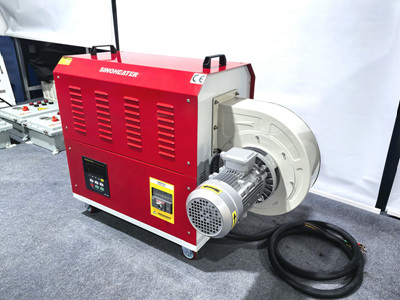Choosing a User-Friendly Heat Blower Based on Target User Groups
When selecting a heat blower, prioritizing ease of use is essential, especially for audiences who may lack technical expertise or prefer straightforward operation. From elderly users to busy professionals, different groups benefit from intuitive designs, clear controls, and minimal maintenance demands. Below are key considerations tailored to specific user needs.
1. Simplified Control Interfaces for Non-Technical Users
Elderly individuals or those unfamiliar with complex machinery often struggle with multi-button panels or digital displays. Opt for models with large, tactile dials or toggle switches that clearly indicate temperature and fan speed settings. Physical labels or color-coded indicators reduce confusion and enable quick adjustments without referring to manuals.
For users with visual impairments, high-contrast controls or audible feedback (e.g., clicks when adjusting settings) enhance accessibility. Avoid devices relying solely on touchscreens or small LED indicators, as these may alienate non-technical audiences.
2. Pre-Programmed Settings for Time-Strapped Professionals
Workers in construction, agriculture, or event management need heat blowers that function efficiently with minimal input. Look for models offering preset modes like “rapid heating” or “energy-saving” to automate performance based on common scenarios. This eliminates the need for manual calibration, saving time and reducing errors.
Additionally, features like automatic shutoff after a set duration or remote operation via basic switches (not advanced apps) cater to users juggling multiple tasks. The goal is to deliver reliable heat without requiring constant supervision.
3. Low Maintenance Requirements for High-Turnover Environments
Facilities managers or rental service providers need heat blowers that operate reliably with minimal upkeep. Choose designs with easily accessible air filters that can be cleaned or replaced without tools. Durable, enclosed motors that resist dust accumulation also reduce the frequency of professional servicing.
For shared spaces like community centers or workshops, self-diagnostic systems that alert users to issues like clogged filters or overheating via simple indicator lights (not complex error codes) streamline troubleshooting. This ensures the device remains functional even when managed by rotating staff.
4. Lightweight and Portable Designs for On-the-Go Users
Contractors, event organizers, or hobbyists who transport heat blowers between sites benefit from compact, ergonomic models. Prioritize devices with built-in handles, balanced weight distribution, and cord storage solutions to simplify movement and setup. Folding stands or wall-mount options further enhance versatility in temporary workspaces.
Avoid overly bulky units or those requiring assembly, as these add friction for users prioritizing speed and convenience. The focus should be on plug-and-play functionality, regardless of the operating environment.
Final Considerations
Selecting a user-friendly heat blower hinges on aligning features with the target audience’s skills, time constraints, and operational context. By prioritizing intuitive controls, automation, low maintenance, and portability, buyers can ensure the device meets practical needs without unnecessary complexity. Always verify usability claims through product demonstrations or detailed manuals before purchase.




